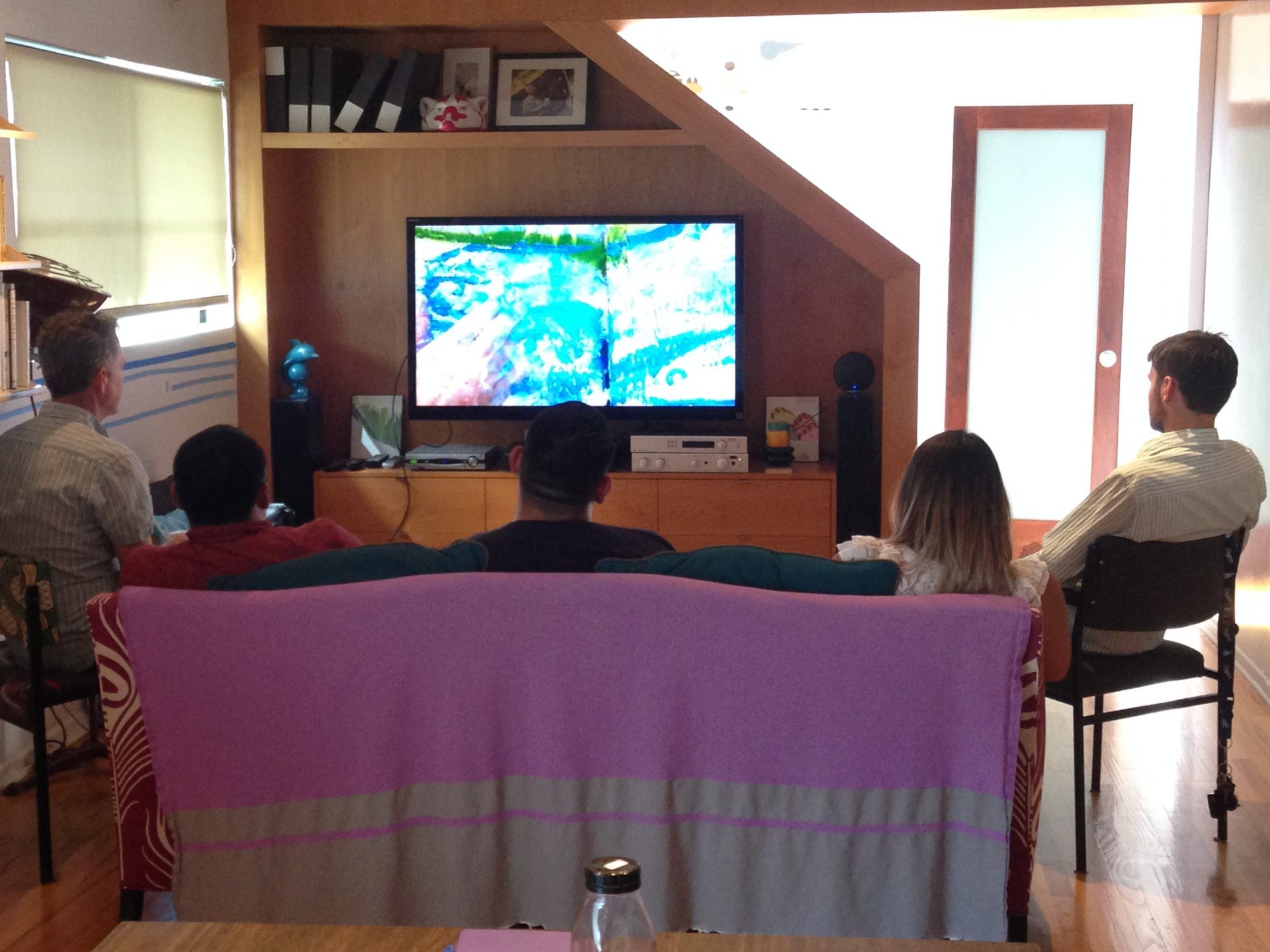
12 Nov Beyond handbooks: community art and ‘deep hanging out’
By: William Warrener
—
Over the coming months, the Urban Futures Lab Fellows will explore and respond to a range of civic and cultural issues, all the while applying their ideas to Los Angeles and the specific communities of which each Fellow is a member.
Taking the Lab as their compass, a series of monthly themes will provide the Fellows with an opportunity to navigate their personal paths towards becoming community problem solvers and future civic leaders. We hope that the Lab can inspire others to explore similar questions – to that effect, you’ll be able to follow our progress through the Fellows’ own written reflections, which will be published on this blog on a monthly basis.
I’m currently working with Public Matters to deliver the Fellowship program and mentoring the Fellows from week to week has been a consistently rewarding experience. I wanted to introduce their reflections with one of my own, paying tribute to a collectively shared ethos that the Fellows have crafted from their exploration of socially engaged art, work in communities and creative placemaking – three interwoven topics that comprise the Lab’s October focus. Paradoxically, given those earlier mentions of compasses and paths, that ethos is, I think, the value of being artfully, thoughtfully and temporarily lost.
What do I mean by that?
Well, this month we’ve discussed some of the most inspiring examples of socially engaged art projects: Willowbrook Is/Es… here in LA, Project Row Houses in Texas, the Rebuild Foundation on the south side of Chicago. Throughout, I’ve been impressed by the Fellows’ perception that no matter the success of these high-profile projects, they can never be complete templates, something you can staple onto a new place and a different group of people. We can learn from the values that underpin Rick Lowe’s work in Houston, but a socially engaged art project for East LA, for example, will require an artist (maybe a Fellow?) to spend time getting lost in the seams of that community; to begin with very little plan other than to listen.
In some cases, that act of listening might result in what Lowe calls artistic ‘solutions’. In others like Willowbrook Is/Es…, however, it serves to illustrate that sometimes listening to a community – actually listening – is the point in itself. Theresa Hwang of LA’s Department of Places, speaking to the Fellows, defined this as ‘taking empathy as your starting point’; anthropologist Clifford Geertz, writing 20 year earlier, called it ‘deep hanging out’. In other words, if you want to understand a group of people (a pre-requisite for trying to facilitate any sort of community change) get ready to spend prolonged, potentially unstructured time getting to know them.
These aren’t just pretty-sounding words. They’re also a warning to artists everywhere, regardless of whether they see themselves as being directly involved in community practice or not. Artists are more than just witnesses to urban change. They are often the people that shape it, chiseling impressions upon their environments, intentionally or otherwise, positively or less so. Crucially, the value that they place upon empathy, the degree to which they embrace ‘deep hanging out’, will determine an artist’s role in a community – as a creative asset in resisting community displacement, or as a harbinger of that displacement.
This, I think, is an understanding that’s obvious from reading the Fellows’ reflections. Between being thoughtfully lost and ‘deep hanging out’, it’s a willingness to keep asking questions, to reach beyond the flat-pack solution, which defines the Urban Futures Lab Fellowship. Off to a good start.
***
William Warrener helps to deliver the Urban Futures Lab Fellowship, supporting the Fellows with their professional development. In addition to Public Matters, he regularly works with Bird and Gorton, an international team of arts consultants. He is in his element when bringing people together to use art, stories and debate to enact positive change.
Before coming to Los Angeles, William ran projects for the Cultural Institute at King’s College London, developing professional opportunities for students within London’s most prestigious cultural organizations. Alongside this, William spent four years with London’s pioneering Clore Leadership Programme, managing residential courses for groups of international cultural leaders and programming international study visits.
He is especially passionate about tennis, Turkish food and performing music with friends.
